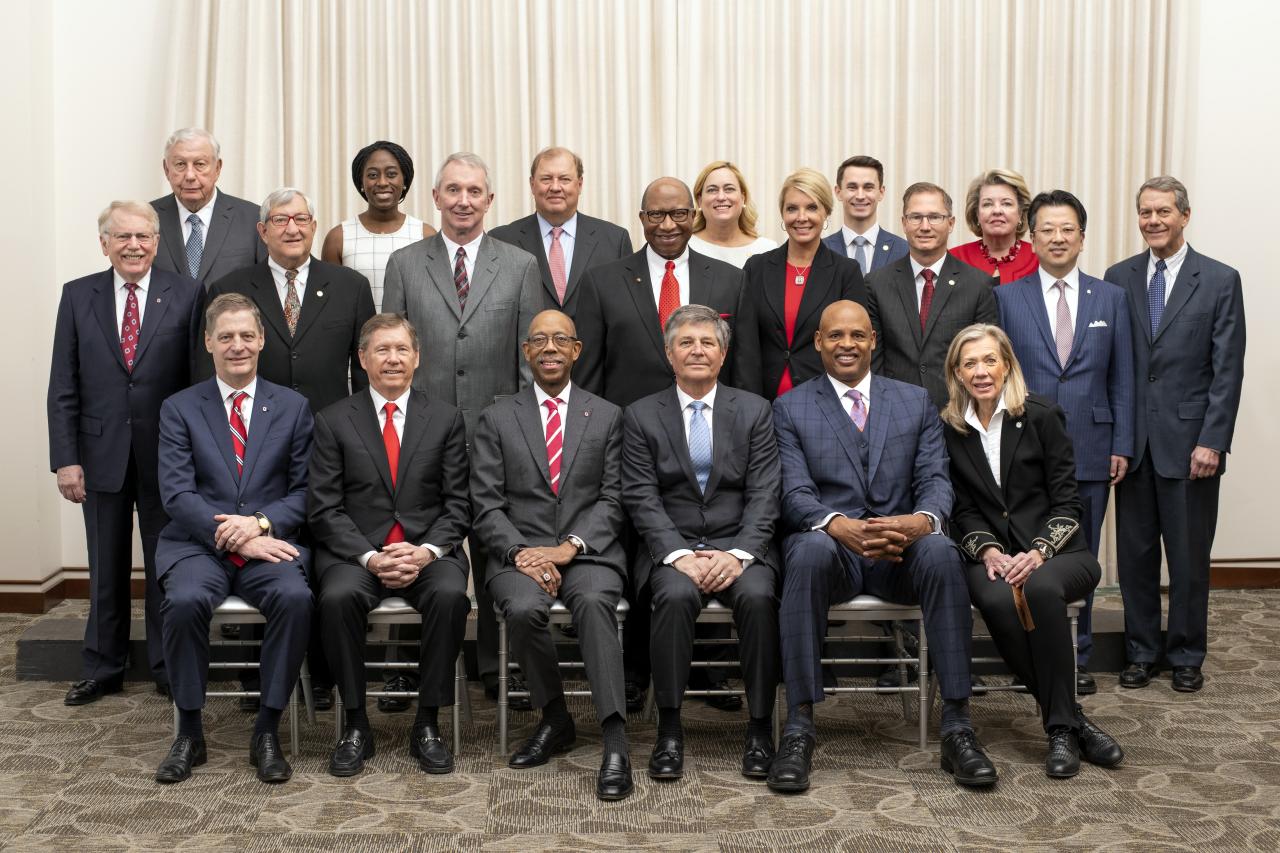American Association of University Professors
News & Blog
01.23.20
Should John Kasich Be the Next President of The Ohio State University? (Part 1)
PART ONE OF A THREE-PART SERIES
The Rumors
Recently, Michael Drake announced his intention to step down as President of The Ohio State University, and the University has subsequently outlined the preliminary steps that it is taking toward identifying his successor.

Columbus’ local NBC affiliate has reported that Ohio State University trustees are considering making former Ohio Gov. John Kasich the next university president. But rumors have swirled around for much longer that Kasich would want the job if his U.S. presidential aspirations fizzled. Some speculated that the trustees named Drake president to warm the seat for Kasich, knowing that Drake was unlikely to serve for an extended period.
A Bad Idea
There are a number of reasons why having any former governor serve as the president of a public college or university in that state, and especially as president of that state’s flagship public university, is a bad idea. There are also reasons why having a former governor with an ideological bent toward privatization and corporatization in such a role is counter-intuitive and demonstrably problematic. And there are reasons why having this particular former governor serving in that role is going to be unnecessarily controversial and counterproductive.
We intend to address these concerns in a series of three posts.
So, why is it a bad idea to have any former governor serve as the president of a public college or university in that state, and especially as president of that state’s flagship public university?
Our public colleges and universities are overseen by boards of trustees, appointed by the governor as openings occur. Generally, at least one trustee’s term ends each year, and on most boards, this means that it will take slightly more than two four-year terms in office for an entire board to be replaced. So, the intent is clearly to balance continuity in the governance of our public colleges and universities with an increasing reflection of the current governor’s priorities.
Insuring some continuity in governance is extremely important because our public colleges and universities are long-established institutions designed to withstand the tumult of changing economic conditions and political fortunes. The tremendous public investment in these institutions demands that they be governed with an emphasis on their longer-term viability, rather than on their shorter-term utility.
The current system is meant to provide necessary checks and balances. The boards of trustees insure that the administrations of our colleges and universities remain accountable, and the boards of trustees are accountable not just to the governor but ultimately to the state agencies that are charged with oversight—in particular, the state’s attorney general, auditor, and inspector general. But when the governorship and both houses of the legislature are held by the same party for more than eight years, there is an increasing risk that this system of checks and balances will begin to break down and that cronyism and corruption will become more prevalent and blatant.
In our increasingly polarized political reality, the one-party control of the executive and legislative branches has become much more common in both blue and red states, not only because of shifts in demographics but also because of more aggressive gerrymandering and voter suppression. In higher education, the political polarization has combined with an increasingly itinerant administrative class, the erosion of shared governance, and the increased reliance on contingent faculty to produce institutional governance that is much less focused on the academic missions and longer-term viability of our colleges and universities

To provide just one recent and salient illustration, the largely self-created budget issues at Wright State University involved the effective loss of $132 million in reserves over a four-year period. Much of those reserves were expended on dubious initiatives and enterprises that federal and state agencies have subsequently declared to be extremely irregular to patently illegal.
But those judgments have been rendered well after the worst damage was done, and clearly some cronyism was involved in the H1B visa abuses, the purchases of many off-campuses properties through an “affiliated entity” meant to circumvent state constraints on such purchases, and the bonuses paid to a consultant for securing federal and state research grants—to name just a few of the problematic decisions made by the university administration and sanctioned by the board of trustees.
Last winter’s three-week strike by the AAUP chapter at Wright State resulted from the faculty’s refusal to allow the gutting of the contract that is their last line of defense against reckless decisions by the administration and the board. And the fact that the university president and other top administrators, as well as three members of the board, have been replaced in the past six months may, perhaps, help to prevent similar issues in the future, but it does not really address the longer-term issues that a relatively brief period of reckless management has created.
Conflicts of Interest
The appointment of a former governor to the presidency of a state college or university, and especially to the presidency of the state’s flagship university, creates conflicts of interest that are even more inherent and inevitable than those that I have just discussed.
In this case, Governor Kasich would be accountable to board members whom he himself appointed and, inevitably, who received such appointments because they were political supporters. This observation is not meant as a pointed criticism of Governor Kasich specifically. It is just the reality that Governor Kasich appointed most of the Ohio State trustees. Moreover, more than half of the voting (non-student) trustees gave political contributions to Kasich prior to their appointments:
Gary R. Heminger, Chair: $2,700
Timothy P. Smucker, Vice Chair: $2,700
Cheryl L. Krueger: $2,000
Erin P. Hoeflinger: $2,700
Alan A. Stockmeister: $2,700
John W. Zeiger: $1,000
Elizabeth P. Kessler: $2,700
Jeff M.S. Kaplan: $2,700 (plus $3,900 during his congressional career)

First Row: L. Von Thaer, T. Smucker, M. Drake (OSU President),
M. Gasser, C. Kellogg, C. Krueger
Second Row: J. Zeiger, A. Stockmeister, B. Porteus, A. Shumate, E. Hoeflinger,
A. Fischer, H. Fujita, J. Kaplan
Back Row: J. Klingbeil, J. Bonsu, G. Heminger, E. Kessler, J. Moseley, J. Porter
Not pictured: A. Wexner, A. VanderMolen
Governor Kasich also appointed most of the board members at Miami University, and some questions were raised when Miami approved a $40,000 fee for him to speak at the university this past fall. Regardless of whether the fee is technically appropriate—whether it is completely in line with what he receives for speaking engagements elsewhere—it raises inherent and inevitable issues of conflicts of interest and cronyism.
Worse, whatever strengths and advantages that Governor Kasich would bring to the presidency of the state’s flagship university, those very strengths and advantages would be inherently and inevitably linked in one way or another to his two terms as governor: that is, the conflicts of interest would be almost unavoidable, and the suggestion of conflicts of interest would be inescapable. It’s hard to see how that would be to the shorter- or longer-term benefit of the university or to the interests of the students and the state that it exists to serve. Even in—or perhaps especially in — this very polarized political era, voters and taxpayers of both parties would agree that avoiding this sort of controversy advances the public good.
Stay tuned for Part Two of this series…